Wensui Feeding & Conveying series autoloader
2023-12-27 Page view:
The autoloader is one of the indispensable auxiliary machines in the production of plastics industry. It is also one of Wensui's core products.
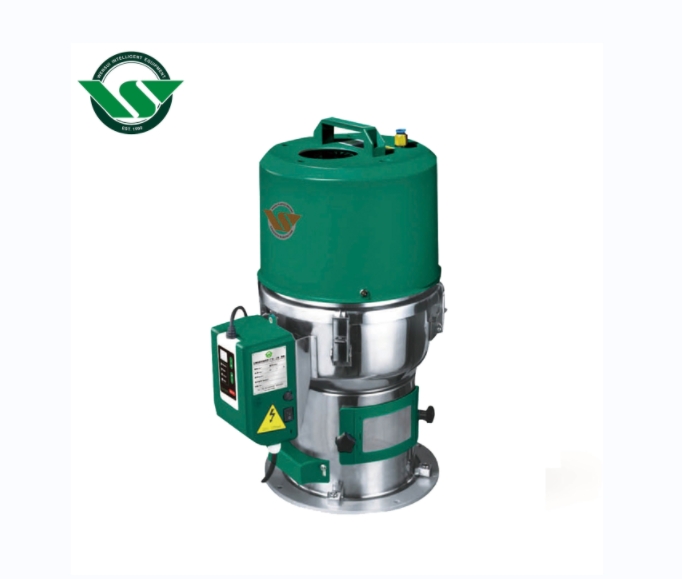
The Euro design autoloader is a specialized equipment used in the plastics industry, primarily in injection molding processes. It's designed to automate the feeding of plastic raw materials, such as pellets or granules, into the hopper of an injection molding machine.
This autoloader typically consists of a hopper that stores the plastic resin and a conveying system—an enclosed tube or hose connected to the hopper. The conveying system uses a vacuum and compressed air to transport the plastic materials from the storage hopper to the injection molding machine's hopper.
WSAL-300/400G stand-alone autoloader
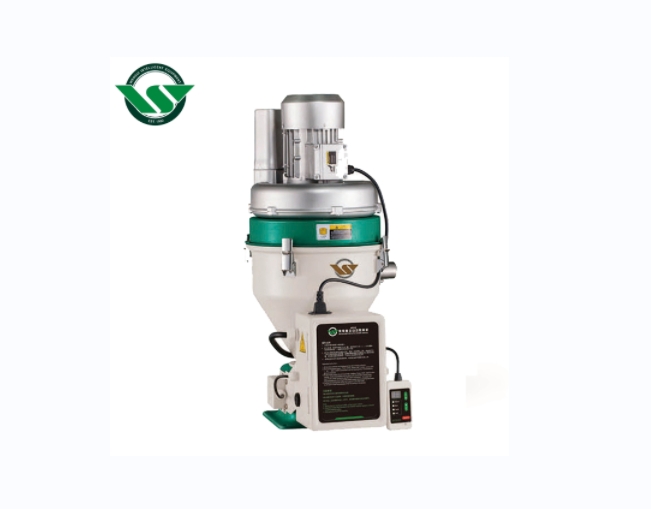
The 300/400G designation refers to the loading capacity of the autoloader, indicating its capability to handle a certain quantity of material, typically measured in 300kg/h 330kg/h. This loader is designed to load or feed plastic raw materials into the processing machine in specific quantities
such autoloaders are integral in automating material handling, reducing manual intervention, minimizing material waste, and ensuring a continuous supply of raw materials to the processing equipment. They contribute significantly to enhancing efficiency and consistency in plastic manufacturing operations, especially in scenarios where precise material quantities are crucial for the production process
WSAL-700G separate-hopper autoloader
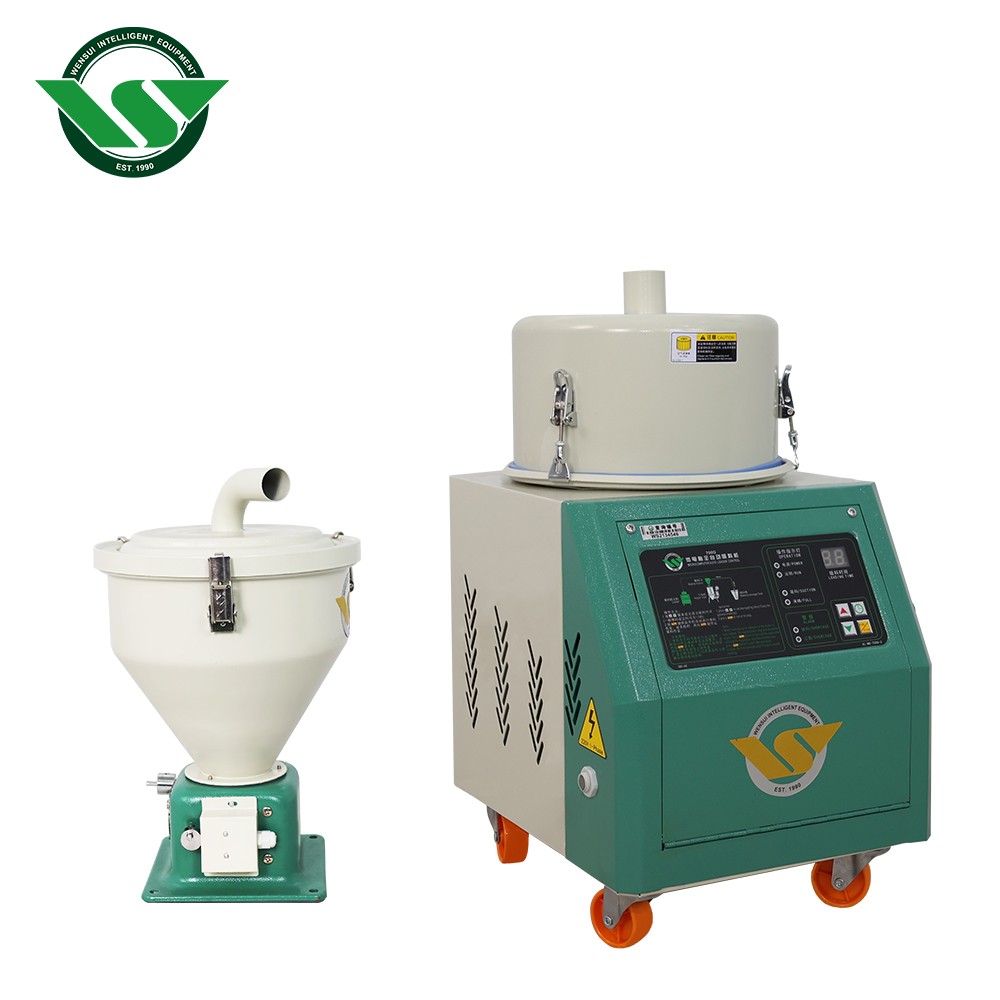
Separate-Hopper Autoloader: the autoloader consists of two distinct:hoppers and loader.
Separate-hopper autoloaders are designed to allow a seamless and continuous flow of materials into the production machinery. They ensure that while the main storage hopper remains stocked with a larger quantity of raw materials, the separate feeding hopper delivers controlled and measured amounts of material to the processing equipment.
WSAL-1.5HP/2HP separate-hopper autoloader
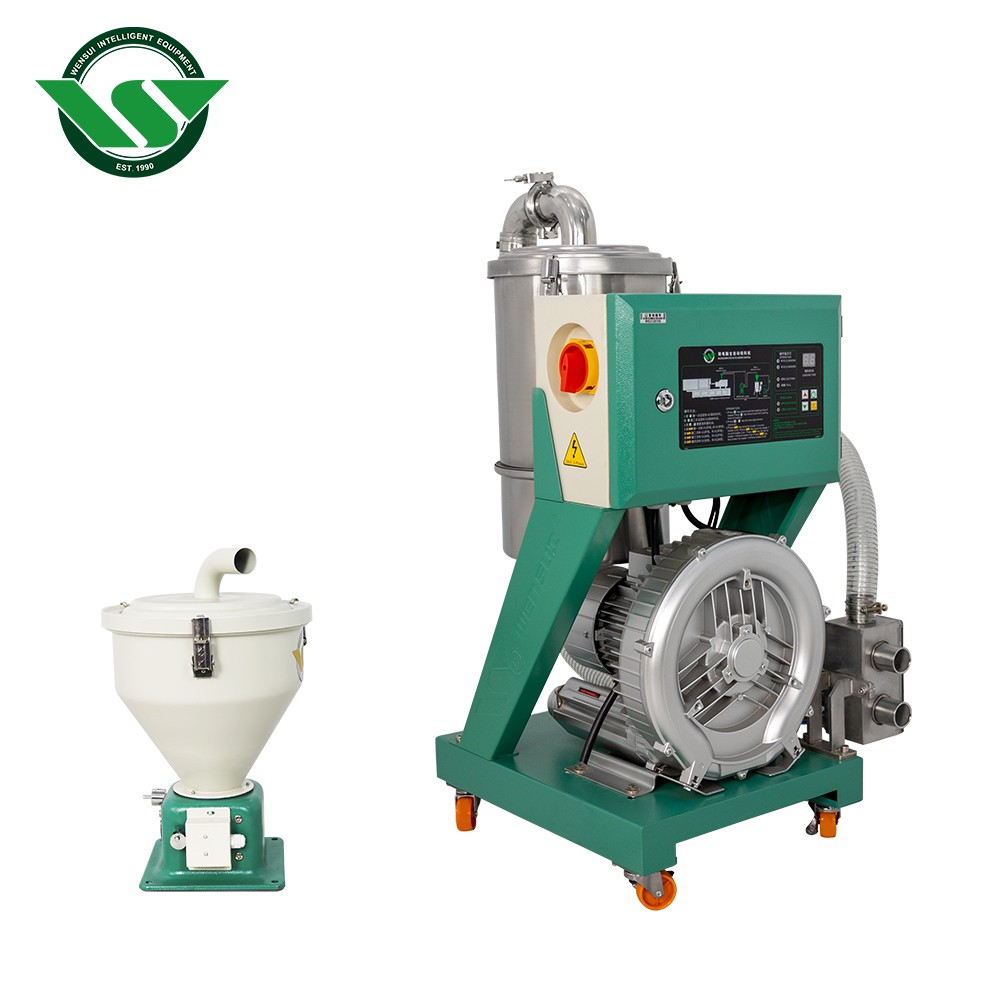
Autoloaders with varying motor sizes or horsepower ratings often indicate differences in their conveying capacities or capabilities. A higher horsepower motor could potentially signify a greater conveying force, allowing for the transportation of larger quantities of plastic raw materials or materials with different properties (such as denser or heavier materials) from the storage hopper to the feeding hopper
WSAL-3HP/10hp separate-hopper autoloader
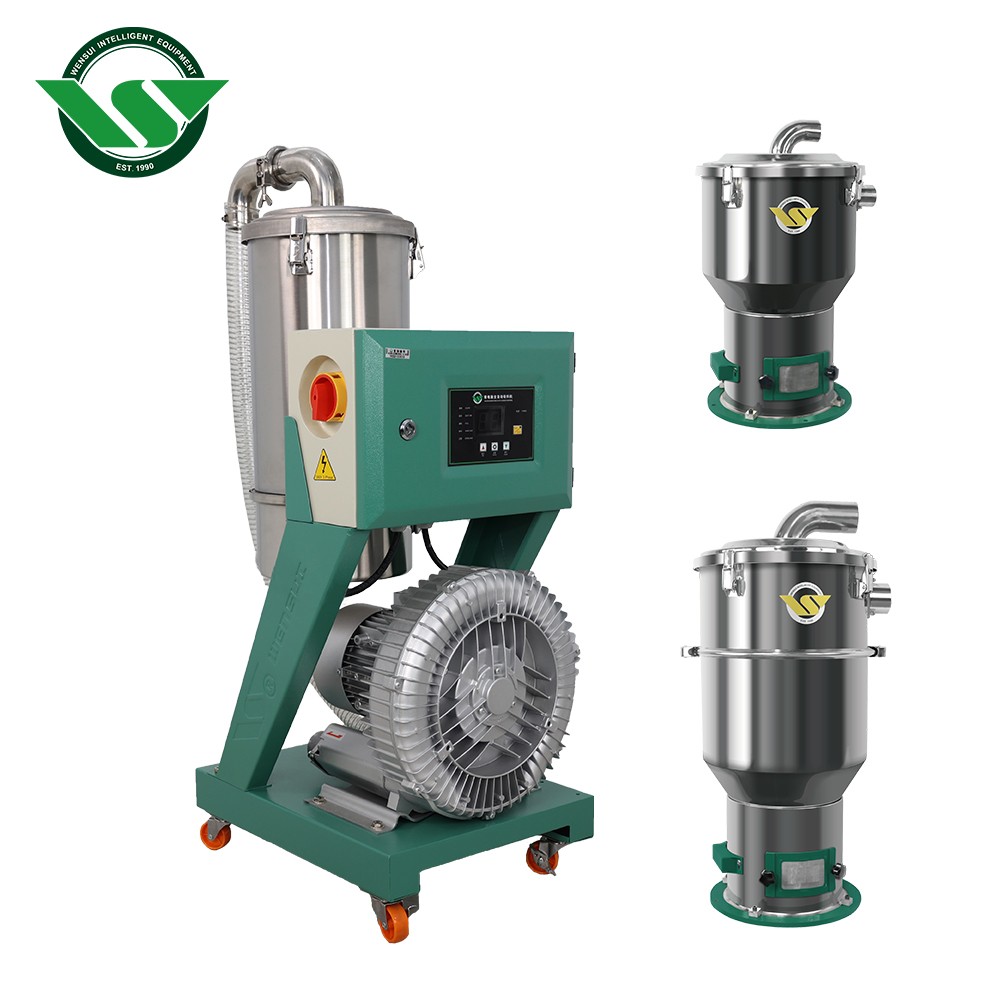
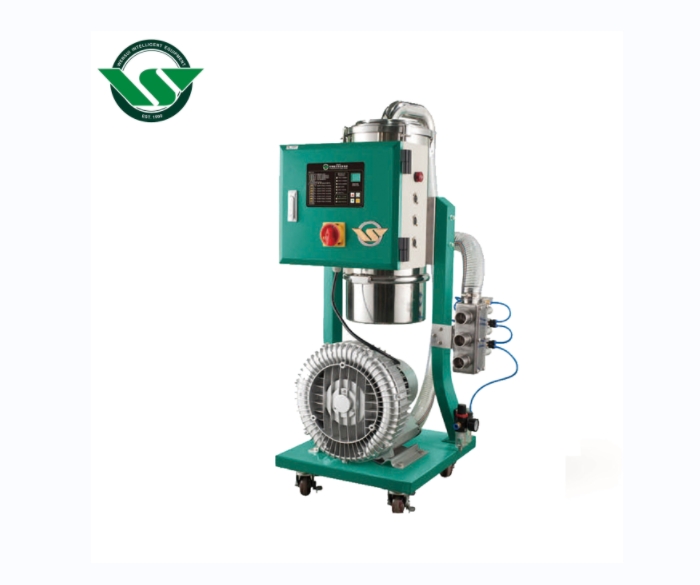
A multi-hopper loader is a specialized equipment used in plastic processing industries, specifically in scenarios where there's a need to handle and manage multiple types of plastic materials or colors simultaneously.
Here are the key features and functionalities of a multi-hopper loader:
Multiple Hoppers: Unlike standard loaders with a single hopper for material storage, a multi-hopper loader consists of several separate hoppers. Each hopper serves as an individual
storage unit for different types of plastic resins, colors, or additives.
Material Segregation: The primary purpose of having multiple hoppers is to prevent cross-contamination and maintain material purity. This setup allows manufacturers to keep various
types of materials segregated, ensuring that each material type remains uncontaminated and ready for use when needed.
Versatility and Flexibility: Multi-hopper loaders offer versatility in handling different materials or colors without the need for manual intervention or cleaning between material changes.
This versatility streamlines production processes, reducing downtime associated with material switching.
Control and Automation: These loaders are often equipped with control systems that allow operators to select and regulate the flow of materials from each hopper to the processing
machinery. This control mechanism enables precise material feeding and ensures accurate blending or processing of different materials as required.
Enhanced Efficiency: By allowing for the simultaneous use of various materials without interruption, multi-hopper loaders contribute to increased operational efficiency and reduced
material wastage.
These loaders are particularly beneficial in industries where frequent material changes, color variations, or specific material properties are essential for different production runs. They
facilitate seamless material handling and contribute to maintaining product quality by preventing material contamination.
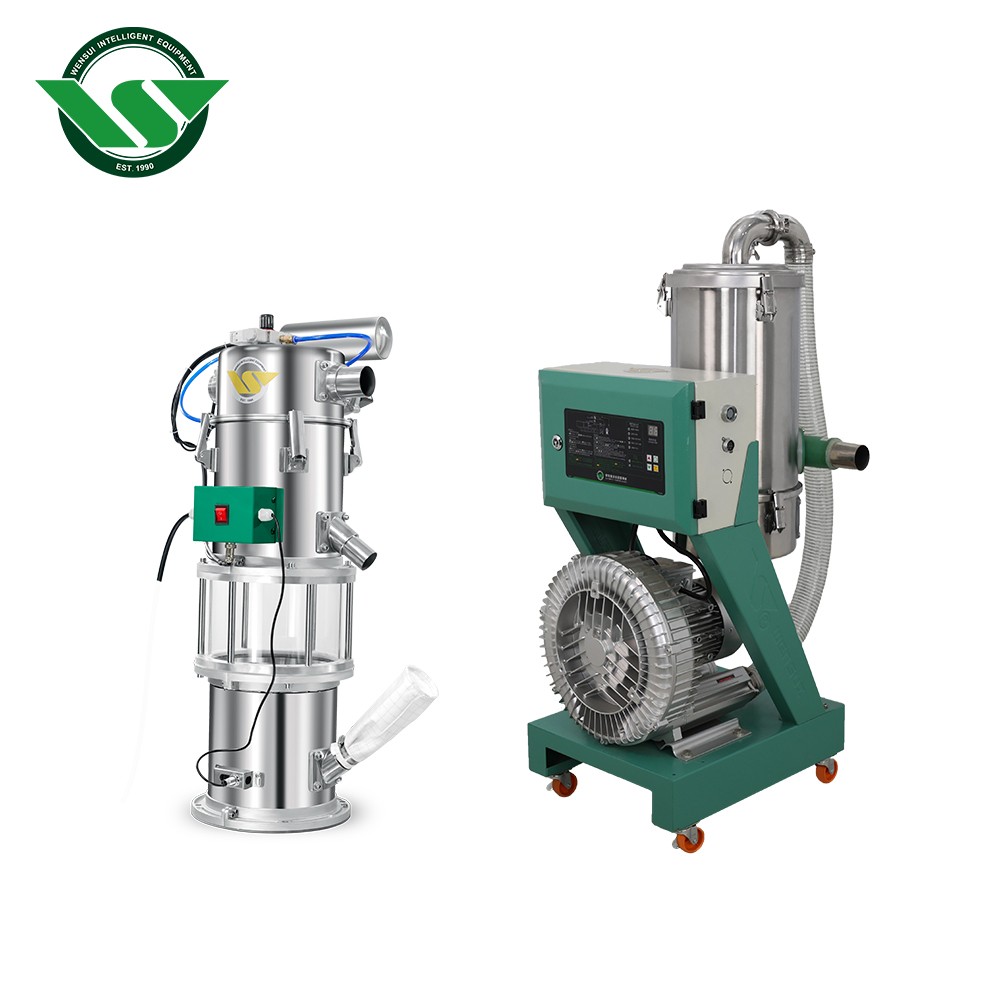
In the context of the plastics industry, a powder autoloader is designed to automatically feed powdered plastic raw materials into processing equipment like extruders or molding machines.
These autoloaders are crucial in automating the handling of powdery materials, ensuring a consistent supply of material to the processing machinery.
Powder Handling Capability: These autoloaders are specialized to handle powdery substances, often designed with mechanisms that prevent material clogging and bridging during the loading process.
Enclosed Systems: Powder autoloaders typically feature enclosed systems to maintain material integrity, prevent contamination, and control the flow of the powdered material from the
storage container to the processing machinery.
Conveying Mechanisms: They utilize conveying systems, such as vacuum or pneumatic systems, to transport powdered materials from the storage container or hopper to the inlet of the
processing machine.
Control and Automation:Powder autoloaders often come equipped with control systems that enable operators to regulate and monitor the material flow, ensuring precise and consistent feeding of the powdered material.
-
2024-11
-
2024-10
-
2024-09
-
2024-09



